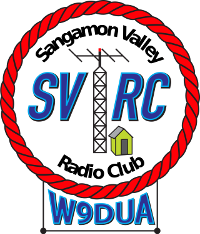Getting on the Air (tongue-in-cheek warning)
Further explanation shouldn't be needed. You are obviously hooked. The ham radio equipment at this level will drain your savings and may result in self imposed isolation from family and friends. But, hey, at least you can make new friends on the air. You can do everything you did at the Full Immersion level, but you can do it faster, better, with more variety and with dazzling graphics displaying your superior performance on an amazing transceiver with a towering antenna. Many 'Full Immersers' wander over here and invest in specialty radios, improved antennas and diagnostic equipment like oscilloscopes, waterfall displays and antenna analyzers. Ham shacks get fancier: they come out of the dark corner of the basement or in from the garage and into brightly lit rooms (in the house!) with deluxe office furniture, heating/air conditioning and a full size padded office chair that tilts.
Seriously, there are some fabulous tranceivers out there from the $1,000 (same radio mentioned in Full Immersion but is not on sale) to $5,000 that will do just about everything you would want to do. However, for those who can afford it, there are transceiver base stations running from $7,500-$15,000. These more expensive radios fall into the custom category where the radio factory hopefully will not only assign a customer service representative to walk through your order and desired specifications but maybe they would take you out to dinner too.
At this level, antennas receive better structural supports such as a tower or a taller tower. Some add a rotor to rotate the direction of the antenna to pick up weak stations. Why have just one antenna? Start your own farm and "grow antennas." Multiple antennas make it easier to go from band to band looking for stations to contact.
The neat thing about the hobby is that ham radio enthusiasts spend a great deal of time thinking "What if/how can I?" and go about creating ham radio equipment or accessories that meet the need. As a result, ham radio has experienced some innovative evolution over the years.
Building your ham shack should start with a plan. You can build your shack incrementally over time which is easier on the wallet and cuts down on adding equipment that may or may not serve your needs down the road.
